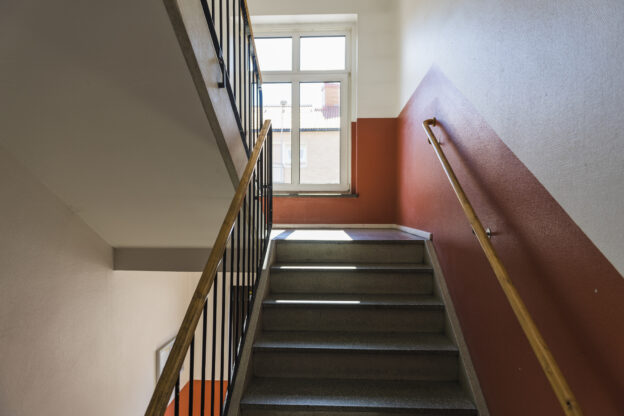Although many residential buildings in New York City have elevators, others only have stairs because they are older structures. Meanwhile, tenants often take the stairs to stay in shape or because they don’t want to wait for slow elevators. Climbing stairs is great exercise, but it can also lead to serious stair injuries if the passageways are not properly maintained by the person in charge of the building.
Here’s what you need to know about stair injuries in NYC and when it’s time to call an attorney to bring a landlord to justice.
Types of Stair Injuries
Stair injuries commonly happen due to stairs that have become broken or worn down over time. They also occur because of broken handrails, poor lighting, ripped carpet covering the stairs, or slippery conditions due to wet weather.
Common injuries that result from a fall on stairs include concussions, broken bones, spinal cord injuries, back and neck injuries, and bruising. These injuries can be painful and expensive to pay for because of their long-lasting effects and ongoing treatment required.
Tenants may fall on stairs when they are in a hurry and rushing to get out the door, because they are intoxicated, or because they are scrolling on their phones and not paying attention to their surroundings. Contributory negligence is a factor when a person is partially (or even mostly) at fault for his or her own injuries. But in the state of New York, you can still pursue a successful case against a landlord if you share some of the blame for a staircase accident. If this is the situation, it is important to work with an experienced personal injury attorney to get the highest value settlement possible given the circumstances of your stair injuries.
When Is a Landlord at Fault for Stair Injuries?
A landlord may be held liable for your stair injuries if you can show that he or she was aware of the stairs’ dangerous condition and did not fix the condition or post warnings about the hazard. This is because landlords have a responsibility to their tenants to keep the premises safe.
This may require replacing flooring or carpeting, installing good lighting in stairways, placing functional handrails along the stairs, or putting up signs when stairs are slippery or undergoing repairs. Landlords also have a responsibility to keep stairways and other shared areas of their buildings compliant with building codes and local ordinances.
When to Hire an Attorney for Stair Injuries
At the Law Office of Jeffrey K. Kestenbaum, we help people after all kinds of slip and fall accidents, including falls at Dunkin Donuts, McDonald’s, Home Depot, and grocery stores. Yet many of our clients come to us because of falls in their own apartments due to dangerous stairs and other hazards that should have been handled by landlords.
To learn more about what to do if you are involved in a slip and fall accident, please contact our office. We will walk you through the process of how to pursue a stair-related accident case against your landlord and the types of evidence that can best prove your case and win the settlement you deserve.
Our legal team is standing by 24/7 to help you during this challenging time, so give us a call at 718-237-5586.







